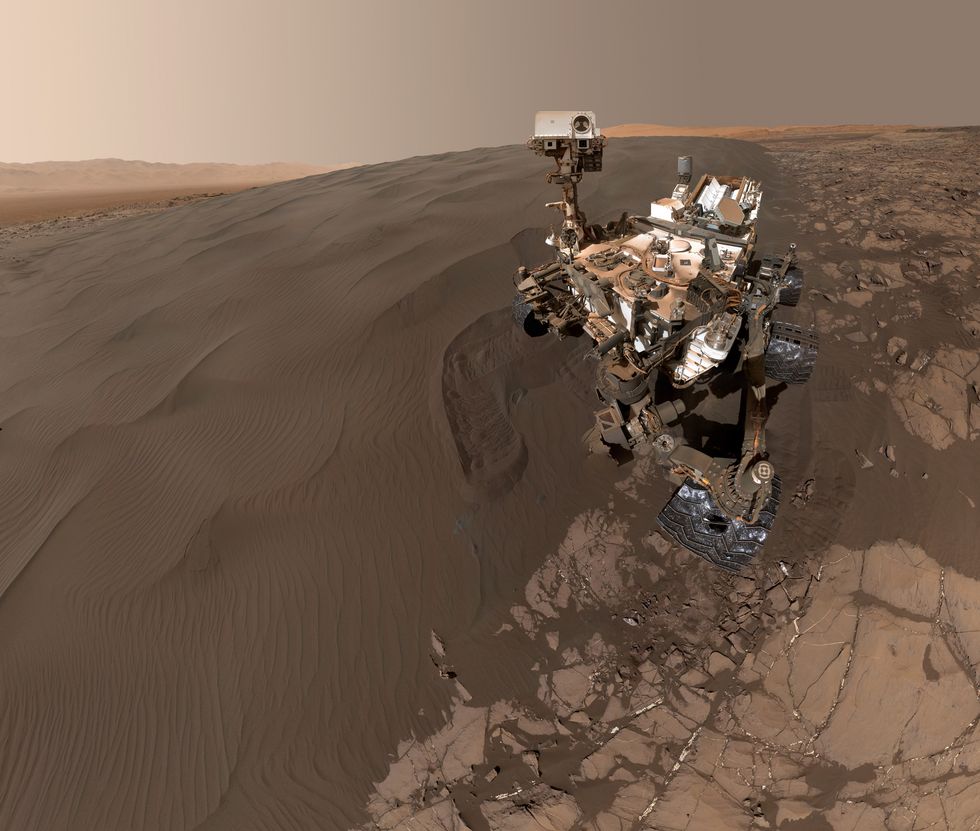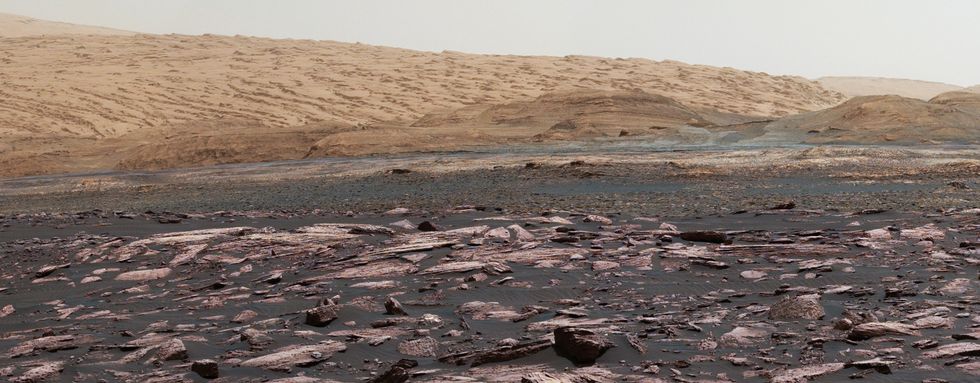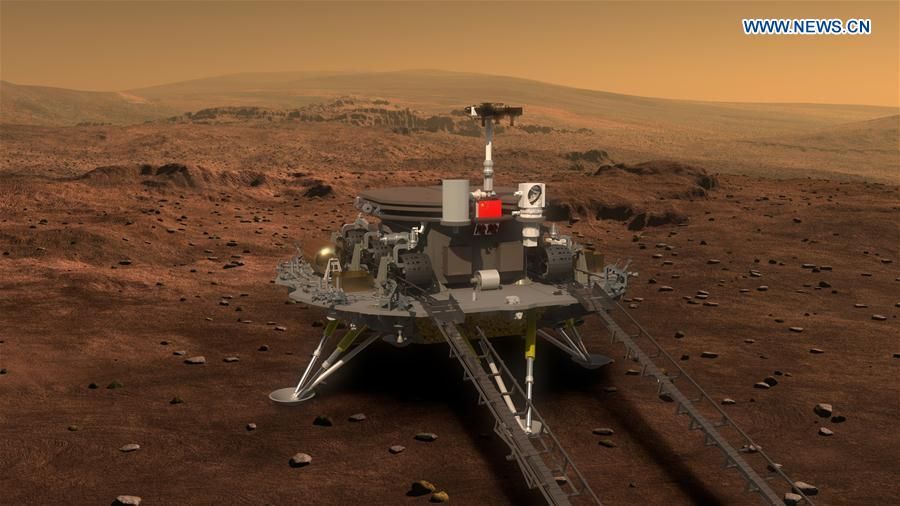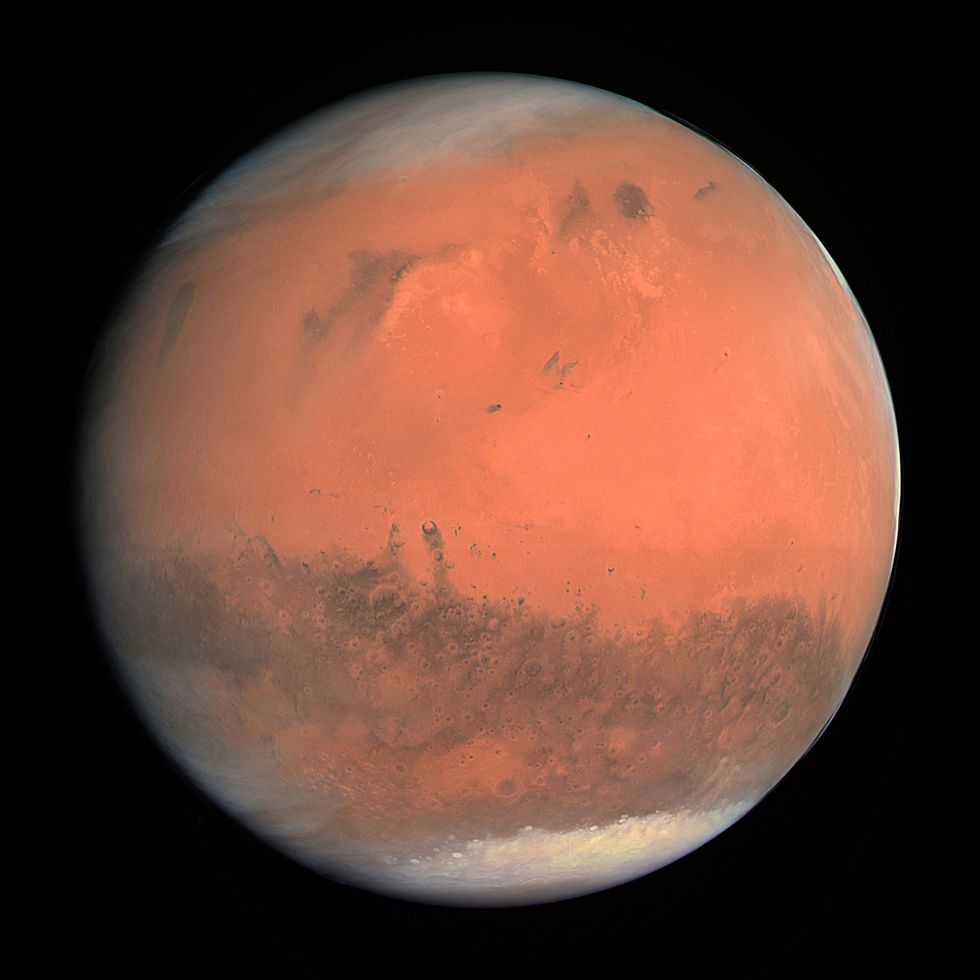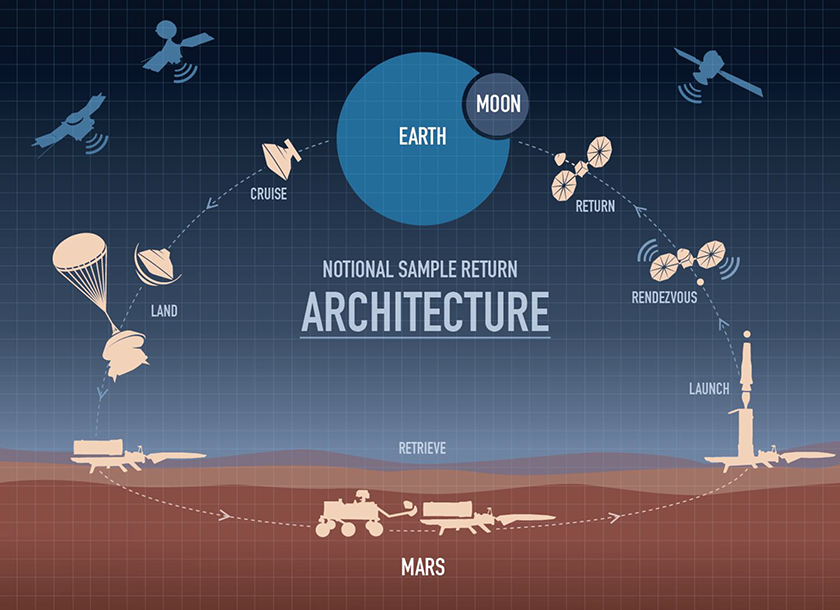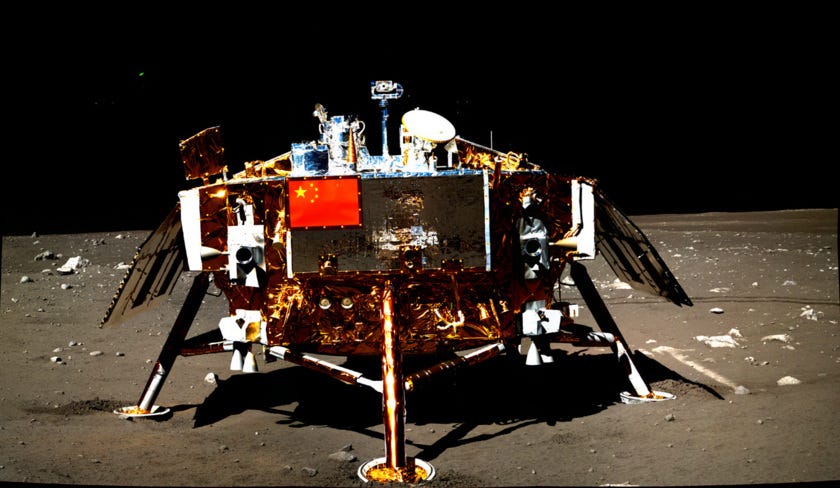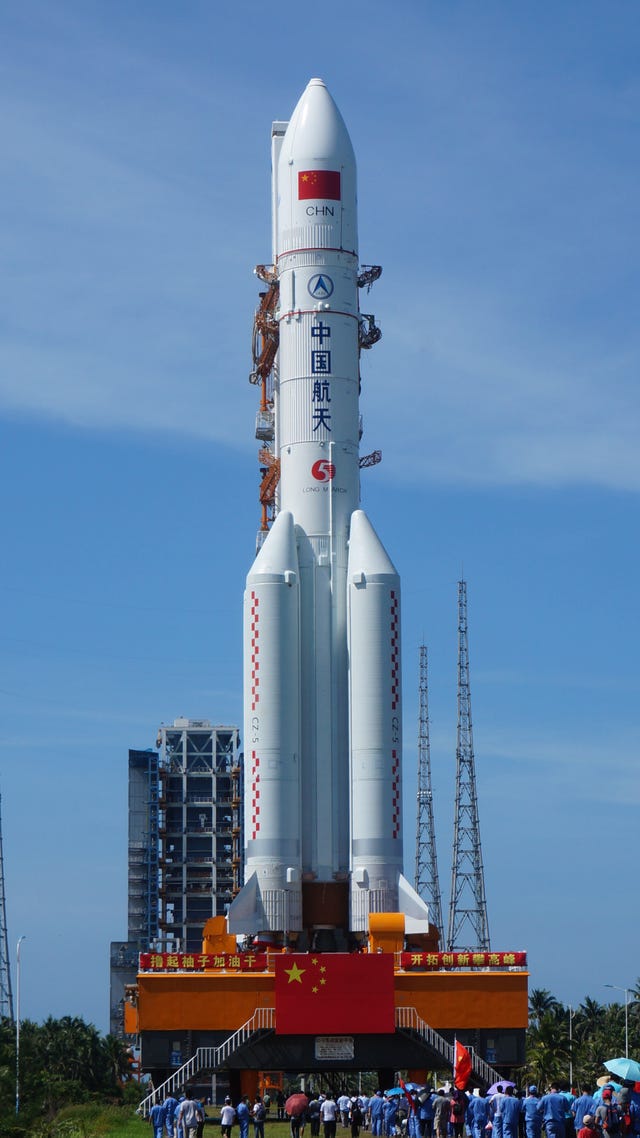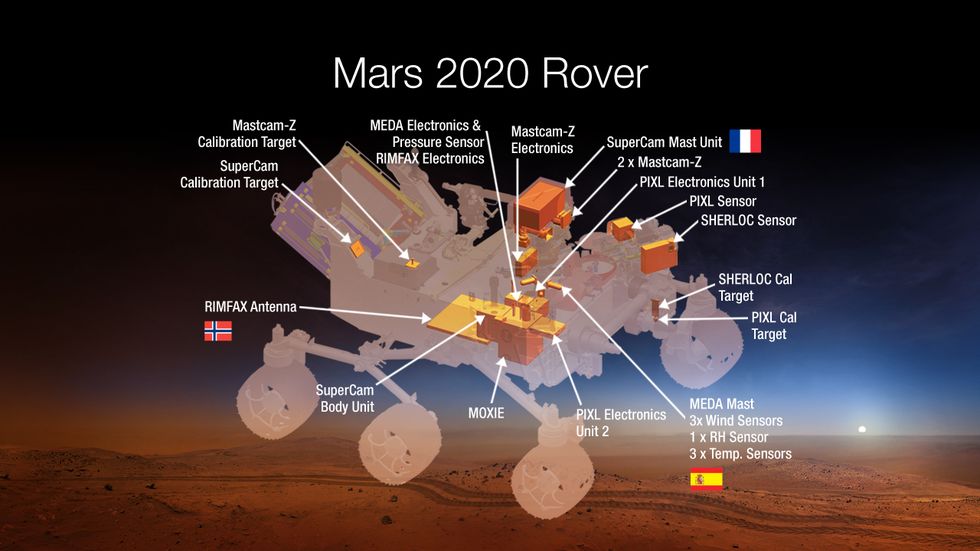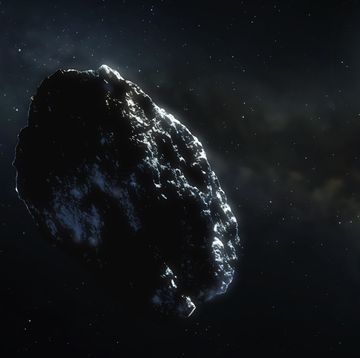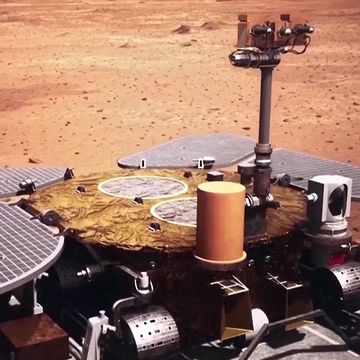The best way to study martian rocks and soil would be to do it on Earth. While spacecraft-mounted instruments—such as the Curiosity rover's ChemCam that vaporizes surface material with a laser and then uses a spectrometer to determine the chemical composition—are invaluable to planetary scientists, they are no replacement for a sample in the lab. The amount of compositional and absolute age data that scientists can obtain with a laboratory full of state-of-the-art equipment and chemicals to test sample materials is unparalleled, as evidenced by research conducted on meteorites (including from Mars) and Apollo moon samples.
To continue this work, scientists need a pristine sample of martian rock and soil, which would help build a Rosetta Stone to unlock the history of the solar system. The potential knowledge to be obtained from such a sample ranges from the formation of Mars to the nature of the planet's ancient surface waters to possible habitability in the red planet's past, and in turn, perhaps the secret to the origin of life on Earth.
With so much to gain, both NASA and the Chinese national space agency are designing missions to retrieve a sample from Mars before the end of the 2020s. The missions are ambitious, incomplete, and reliant on yet-to-be developed technologies. They both start, however, with flights to Mars in 2020.
Scouting the Red Planet
Both American and Chinese Mars sample-return ambitions require preliminary missions to scout the planet and locate the best place to drill into the rock and core out a sample. NASA plans to do this with the Mars 2020 rover, slated to launch on an Atlas V rocket in July of that year and land on Mars in February 2021. The Chinese National Space Science Center (NSSC), meanwhile, is planning an orbiter, as well as a lander that will deploy a small rover, known as the Mars Global Remote Sensing Orbiter and Small Rover, to launch on a Long March 5 rocket in July or August of 2020.
NASA's Mars 2020, a car-sized twin to the Curiosity rover with an upgraded instrument suite, will not only locate the best places to collect a sample, but will also core the sample into a receptacle tube and deposit it on the surface to be picked up by a later mission. The Mars 2020 team is still considering three possible landing sites: Columbia Hills in Gusev Crater, a mineral-rich region near the Spirit rover's old exploration site; Jezero Crater, where surface water is thought to have flooded and receded at least twice in the past; and NE Syrtis, an area once characterized by volcanic activity and hot spring flows.
The Mars 2020 team will continue to analyze surface composition data from orbiters such as the Mars Reconnaissance Orbiter (MRO) to ultimately select one of these sites based on mineralogy and the potential for habitability. Once Mars 2020 arrives, however, where to sample will be determined on the fly.
"We'll be exploration driven once we get on the surface, so we'll have to make decisions," Katie Stack Morgan, deputy project scientist for Mars 2020, told Popular Mechanics during a visit to NASA's Jet Propulsion Laboratory in August. "Okay, here's a rock outcrop, where would be the best place to sample? Or should we pass on this one and go to the next one?"
Once the rover has collected multiple samples in storage tubes, it will deposit the samples in a "depot cache" to be picked up by a yet-to-be-determined future mission. "We will have a couple different, probably at least two, drop-off spots," says Morgan. As to what exactly Mars 2020 will sample, "that will be something we'll figure out on the surface."
The NSSC's mission, on the other hand, will do most of the planet-scouting with China's first spacecraft to orbit Mars, or Huoxing in Chinese, meaning "fire star." Using data gathered from orbit, Chinese scientists plan to select a location for a follow-up sample return mission that could return to Earth before 2030.
According to Andrew Jones of the Planetary Society, who specializes in Chinese space program coverage, the current plan is to launch a large spacecraft that can carry out all phases of the mission, including atmospheric entry, descent and landing (EDL), sample collection, ascent from Mars, rendezvous in Mars orbit, and a flight back to Earth. Such a mission would require the super-heavy-lift Long March 9 rocket, which is to enter development in the near future, targeting a first flight in 2025.
The Chinese sample return mission has yet to receive formal approval, but national space officials and the NSSC's primary contractor, the China Aerospace Science and Technology Corporation (CASC), which is building the 2020 Mars spacecraft, have been discussing the mission publicly, according to Jones. In addition, China published a white paper in 2016 that discusses "key technological research on the bringing back of samples from Mars."
While the 2020 missions to Mars are approaching final preparations, aiming to launch in just over two years, the sample return missions to follow are still in early planning stages, and a number of questions about the missions have yet to be addressed. As 2020 looms, however, we could see the space agencies of the two global powers start to drill down exactly how they plan to bring home the most valuable scientific sample ever collected.
Fourth Rock from the Sun
The sample caches deposited by the Mars 2020 rover will be one of the most significant aspects of that mission, but NASA has yet to figure out how to pick them up. "All options are on the table," says Morgan. "One concept is a fetch rover."
Thomas Zurbuchen, head of NASA's Science Mission Directorate, discussed possibilities for fast tracking the sample return mission at a National Academies space studies board meeting in August. In the meeting, Zurbuchen proposed a mission to launch as soon as 2026 to send a multi-phase mission to collect the samples. A lander would touch down on Mars and deploy a fetch rover to collect the samples and return to deposit them in the lander. Alternatively, the Mars 2020 rover could deliver samples directly to the lander.
Once secured in the lander, a small rocket called the Mars Ascent Vehicle (MAV) would launch to carry the samples to a rendezvous with another spacecraft in Mars orbit. That orbiting craft would then return to Earth with the rocks from Mars, or possibly fly to an orbit in cislunar space between Earth and the moon to be picked up by a future lunar mission.
To expedite the Mars sample return mission, however, NASA would likely need to postpone a new Mars telecommunications and reconnaissance orbiter, already funded by Congress and currently planned for a 2022 launch. Postponing the launch of a new Mars communications relay satellite would require NASA to figure out how to use existing orbiters to continue support for surface missions, possibly by changing the orbit of the Mars Atmosphere and Volatile Evolution Mission (MAVEN) and repurposing that atmospheric science spacecraft to serve as a telecommunications link.
"At the end, the question we're going to have to ask is, how important is that sample return?" Zurbuchen said. "Do we want to tunnel-vision focus on that piece, because of the fact that we think it's so critical?"
While NASA's challenges establishing a sample return mission are largely logistical—deciding which method is best and figuring out how to fund the mission among a multitude of high-priority interplanetary missions—the NSSC's challenges are mostly technical. The global success rate for missions to Mars is only about 50 percent, and to date, just one institution has successfully landed on the red planet: NASA's Jet Propulsion Laboratory.
China's first attempt to launch an orbiter to Mars, Yinghuo-1, was lost after the Russian spacecraft it was hitching a ride with failed to conduct two engine burns to fly to Mars. The two craft were stranded in Earth orbit in late 2011 and burned up in the atmosphere a couple months later.
However, China's series of successful lunar missions provides reason to believe the country could pull off its ambitious Mars mission in 2020. Chinese missions Chang'e 1 and Chang'e 2 successfully orbited the moon in 2007 and 2010, respectively. Chang'e 3 successfully landed on the moon and deployed a small rover called Yutu (Jade Rabbit) in 2013, similar to the lander/rover design China plans to send to Mars.
The Chinese space program's next big test will come in 2018, when the People's Republic plans to launch Chang'e 4 to land and deploy a rover on the far side of the moon, a feat that has yet to be accomplished by humanity. Putting a lander and rover on the far side of the moon will require a telecommunications relay satellite to launch to an orbit beyond the moon about six months prior. The Chang'e missions will culminate with 5 in late 2018 or early 2019, the first lunar sample return mission since the Soviet's Luna 24 in 1976.
Racing to Mars and Back
The completion of the Chang'e program will be a vital test for crucial technologies required for both the Chinese 2020 Mars mission and a Mars sample return mission to follow. However, the biggest question mark on the Chinese schedule to Mars sample return is certainly the Long March 9 rocket. A Chinese Long March 5 heavy-lift rocket failed after launch earlier this year, postponing the Chang'e 5 mission. The even larger, more powerful Long March 9, which is still in early planning phases, will undoubtedly present a significant challenge to the Chinese space program. Rockets of this size and power, such as NASA's Space Launch System (SLS), are notorious for running up against schedule delays and high cost overruns.
If China pushes ahead with plans for a Mars sample return mission to launch on one rocket, it will need the Long March 9. However, it seems possible that the country could pivot to a multi-phase mission using the Long March 5, similar to NASA's current sample return mission outline.
The technical, logistical and budgetary challenges for either country to pull off a Mars sample return mission before 2030 are significant and manifold. The first step for both is successfully launching a flagship mission to Mars in 2020.
However, at the breakneck pace that China's space program has been advancing, with multiple space stations and lunar missions launched in the past decade, the wealthy and powerful nation is clearly committed to aggressively advancing space sciences. As for NASA, you have to wonder how long the agency's scientists will be able to bear having martian samples carefully drilled out and stored in a receptacle on the surface of the planet, just waiting to be picked up.
If the two nations are starting to feel pressure to beat one another in the race to return home with a tantalizing sample of red planet rock, good. Getting a sample of Mars material into the hands of laboratory scientists on Earth could lead to some of the most profound scientific discoveries in the history of humankind. It's time to kick Mars sample return into high gear and bring that red dirt home.

Jay Bennett is the associate editor of PopularMechanics.com. He has also written for Smithsonian, Popular Science and Outside Magazine.

